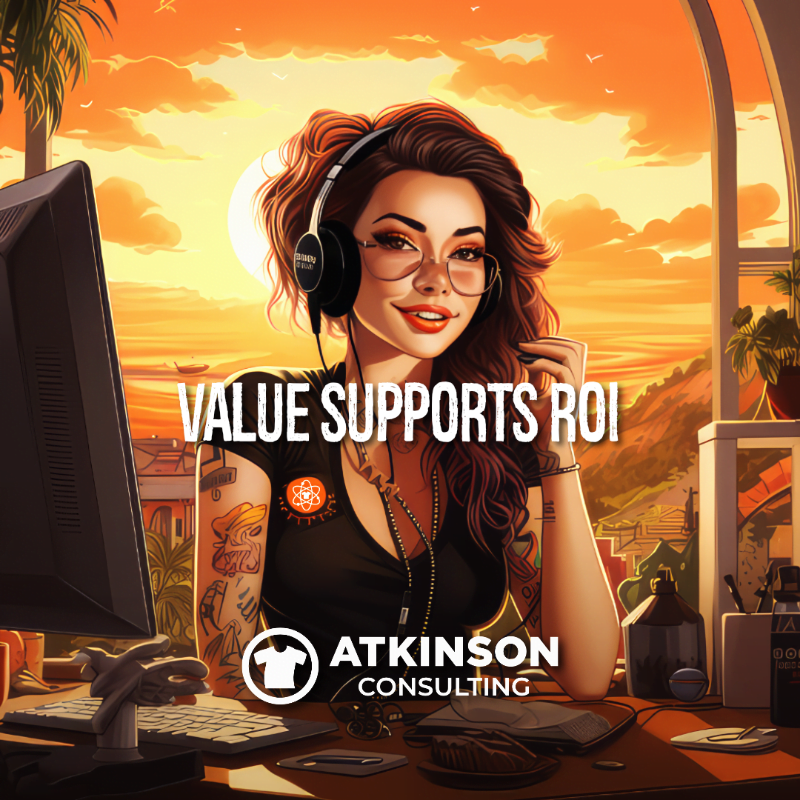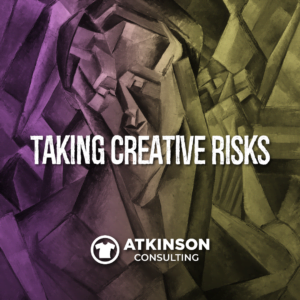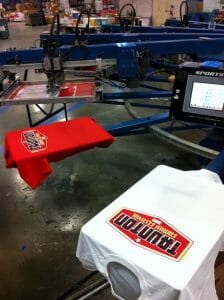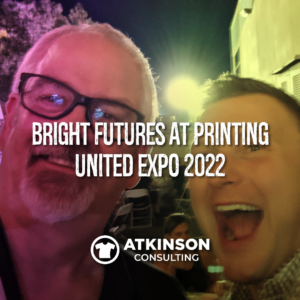What is value? Value to your customers? To your staff? Your community? Maybe even to your supply chain?
How often are you considering the value of what you bring to these vastly different stakeholders? Value is the foundational support for return on investment. If that value isn’t obvious as the nose on your face, you aren’t in alignment with your customers, employees, neighborhood, or vendors.
ROI certainly is about money. But it is also about time. When people value something, they will be happy spending their valuable time with it. Otherwise, they will do something else.
So, I’ll ask again…and think about your business; how valuable are you to these groups?
Your Value
How well do you know your customers, employees, neighbors, or suppliers? On the other hand, how well do they know your company? Do you really have a relationship if your relationship is based on an online sale, purchase order, or social media “like?”
Are you doing anything to personally get in front of these folks and drive more actual engagement?
Some things to consider:
Quality
The Ford Motor Company once said, “Quality is Job One.” But what is quality? Where does it show up? Sure, you can print, embroider, digitally print, or heat press images like the badass you are. But how do you answer the phone, tape up a box, or deliver a sales presentation?
Does your notion of “quality” deliver the value that your customer expects? What if you are over-building your quality on aspects your current or potential customers don’t care about?
You’ll have to charge more for that quality, and these folks won’t want to pay for it. The alignment is off.
Plus, are your employees interested in delivering the level of quality that your marketing is demonstrating? How do you know?
As you sink money into technology, equipment, training, processes, and consumables that will drive more quality into what you do, stop and ask yourself if you can somehow measure the ROI of that investment. If “everything has a number,” what is a good number, and what is a bad number in what you are doing?
Define that.
Convenience
People pay more for things that are easier. I don’t know about you, but I want less friction in my life. Why do you think Amazon has grown into the monster it is today? It is certainly more than a way to order books.
How convenient are you to your customers, employees, community, or suppliers?
Are you the one that is making things easier or harder? The theory of constraints says that you can only move as fast as the slowest part of your process. Let’s twist that a little bit and say that your value can only be defined as how easy it is to work with you.
Take a minute to walk out to the metaphorical curb and look at your business from the sidewalk. What do you see? Does anything bug you about how you operate?
- Are the right customers buying from you?
- Can the best employees find you and will line up to work in your business?
- Do your neighbors care that you are around? Do you even know them?
- Are you setting the standard when your supply chain compares your business to others?
On purpose, what are you doing right now to eliminate friction and create more convenience with these four stakeholders in your business? You have to invest in this. Creating something worthwhile isn’t an accident.
Customer Service
Good customer service in a business is a default, table-stakes concept. What do I mean by that? I mean that everyone in your company is expected to be nice. Return phone calls. Do what they say. Establish trust and act with integrity. Basically, do unto others and that whole bit.
On the other hand, EXCEPTIONAL customer service can be defined as when someone immediately has to tell someone else about your company. And in a good way. As in, “I’ve never experienced this before in my entire life” example. I’ve had this happen a few times in my life with some great waiters, hotel staff, store clerks, and even sales reps. They set the bar.
What would it take for that to be you?
Also, customer service isn’t completely defined as limiting to only customers. There is internal customer service, where your teams support one another. If you spend any sort of time listening to one department blame another for something that happened, this may be a foreign concept. Varsity players want to work with other varsity players. We are professionals. As Seth Godin says, “People like us do things like this.”
Who on your team is getting in the way of building that type of culture in your business? What would happen if you replaced them? Why are you waiting?
Consider how your “customer service” interacts with everyone around you in your community. Do your employees park in someone else’s parking lot? Are you organizing for a better community and showing leadership, or are you the one everyone complains about?
With your suppliers, how are you reciprocating? Can you recommend other customers to them? Like or comment on their social media posts? Attend their events, and even offer to be an example? Trust me, the more your scratch their back, the more they will want to scratch yours. A lot of perks come with familiarity.
Innovation
What’s new? And I mean that in a literal sense.
Are you constantly bringing the heat with new ideas? People love a winner. It is easy to do business with a company that is interested in being a trendsetter and always has a spark of creativity. What are you doing on purpose to drive that? Here’s a KPI for you: how often a week are you failing at a new thing?
In the decorated apparel industry, printing, embroidering, or heat pressing a shirt is not difficult. It doesn’t take much to get started in this business. The trick is to separate from the pack. To be different.
Yet another Seth Godin quote, “The key to success is to find a way to stand out. To be a purple cow in a field of monochrome Holsteins.” Sorry, I like that guy.
Innovation doesn’t have to be about how you decorate. Although it could be. It could also be a business model. What outcomes are you trying to build that solve the most relevant problems?
Relevant to whom?
- Your customer?
- Your staff?
- Your community?
- Your supply chain?
Commodity-based businesses sell with volume at cheaper prices. They have to work harder. Sales are easy, but profit is harder. Value-based businesses sell on alignment with fewer orders at higher prices. Sales are harder, but profit is higher.
Innovation can work in either instance, but it is the differentiator. It’s a new thing that nobody (even if that is just you) is doing yet. It’s sometimes risky and unproven. This is why taking calculated chances can pay off. Sometimes you’ll need to partner up. Often, you’ll need to ask for help.
Speed
As they say, “Speed Kills.” Meaning if you are too slow, you are going to lose.
People don’t have any patience. Like it or not, that’s the truth. Therefore, let me ask you this pertinent question, “are you designing your business to be the best warp-speed business in the industry?”
What do you think it would take to pull that off?
Would your customers like their order delivered in an hour? What changes in your business would you need to make?
This is a who, not how, question. Who would you need to bring in to be able to build that? I’m saying this because if you knew how you would have built that already.
Also, anybody off the street can work. To do the work with speed, quality, and precision requires another level of employee. To increase the operational speed of your company, you’ll need to invest in your employees. Are you committed to that?
Let’s also not skip over the obvious point when talking about speed, and that is automation. Can things automagically happen where you don’t need an employee to do something? We are talking about software, equipment, and technology here…but also people. As in, you’ll need your crew proficient in whatever you build out.
One Last Thing About Value
At the end of the day, all that matters is what your customers value. Whatever you do or dream up, they have the final say. You’ll know it resonates with them when they vote with their wallets.
For example, let’s use Apple. This is a company that only has about 100 products and was the first US company to have a market cap of $3 trillion.
- Did they make the first computer? No.
- The first cell phone? No.
- The first electronic tablet? No.
- The first music player? No.
- The first watch? No.
- The first app? No.
- The first cable service? No.
- The first way to pay for something? No.
However, when you look at the things outlined in this blog: Quality, Convenience, Customer Service, Innovation, and Speed…you have to consider Apple one of the best delivering on these items.
What is it like to be an Apple Customer? Employee? Neighbor? Supplier? Do yourself a favor and take some lessons from this company. They aren’t trying to be the first; they just want to be the best.
Have they stubbed their toe along the way? You bet. They pushed out a lot of stuff that didn’t quite work how they wanted. But without the failure of the Apple Newton, we wouldn’t have the iPad.
Sure, they have competitors just like you. However, their best asset isn’t their products; it’s their loyal and rabid customer base. Their customers evangelize what using and owning an Apple product is like.
That’s how value supports ROI.
“Price is what you pay. Value is what you get.” – Warren Buffett
“Knowledge has no value unless you put it into practice.” – Anton Chekhov
“To add value to others, one must first value others.” – John C. Maxwell
Help Support This Blog
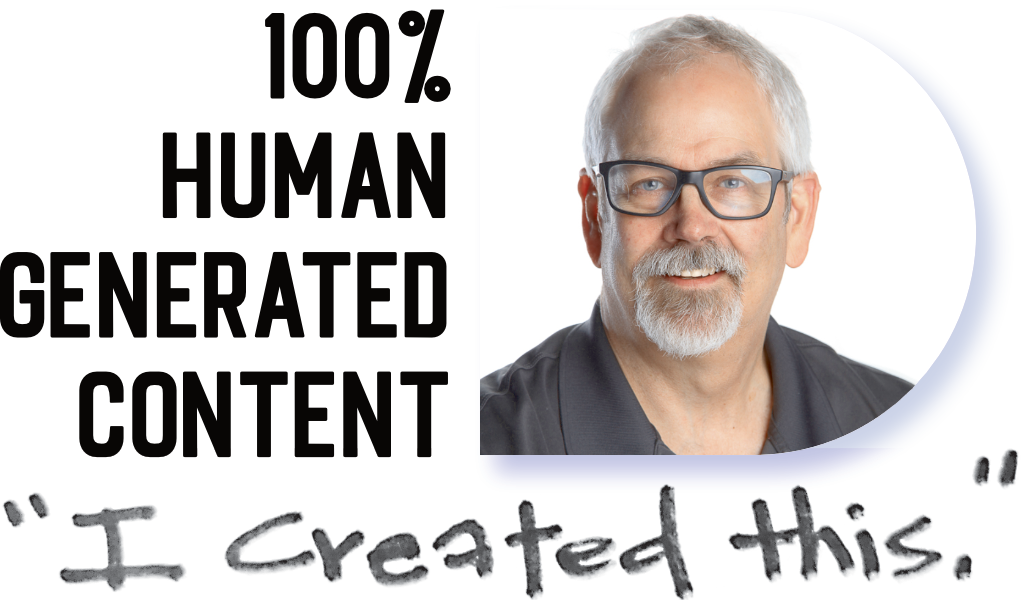
While I may be goofing around with AI for some projects, this blog and its contents have been created by me, Marshall Atkinson. I occasionally use AI tools such as Midjourney or OpenAI. Tools are meant to be used, and as a human being, I can control them.
Why am I writing this? To remind you, dear reader, these words are backed by a real person. With experience, flaws, successes, and failures… That’s where growth and learning happen. By putting in the work.
If you are reading this and it is not on my website, it has been stolen without my permission by some autobot. Please report this to me and/or publicly out the website that hijacked it. And if you are trying to copy and use it without my permission, you are stealing. Didn’t your mama teach you better?
If you like this blog and would like to support it, you can:
- Buy a book.
- Share this blog on your social media.
- Leave a comment! Engagement is fun.
- Join Shirt Lab Tribe.
- Subscribe to the Success Stories podcast.
- Watch and like an episode on the Jerzees Adventures in Apparel Decorating YouTube series.
- Get signed up for the new Production Tracker app.
- Subscribe to the Midjourney Elevating Print Creativity Newsletter
Also, my basic elevator pitch to you is that I help with “Clarifying effective change.” If you are dissatisfied with your business’s current results, maybe I can help.
Please schedule a discovery call here if you want to learn more.
Thanks!

